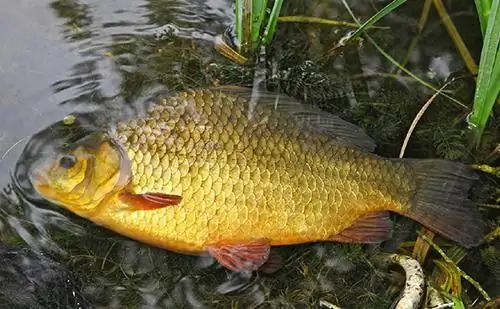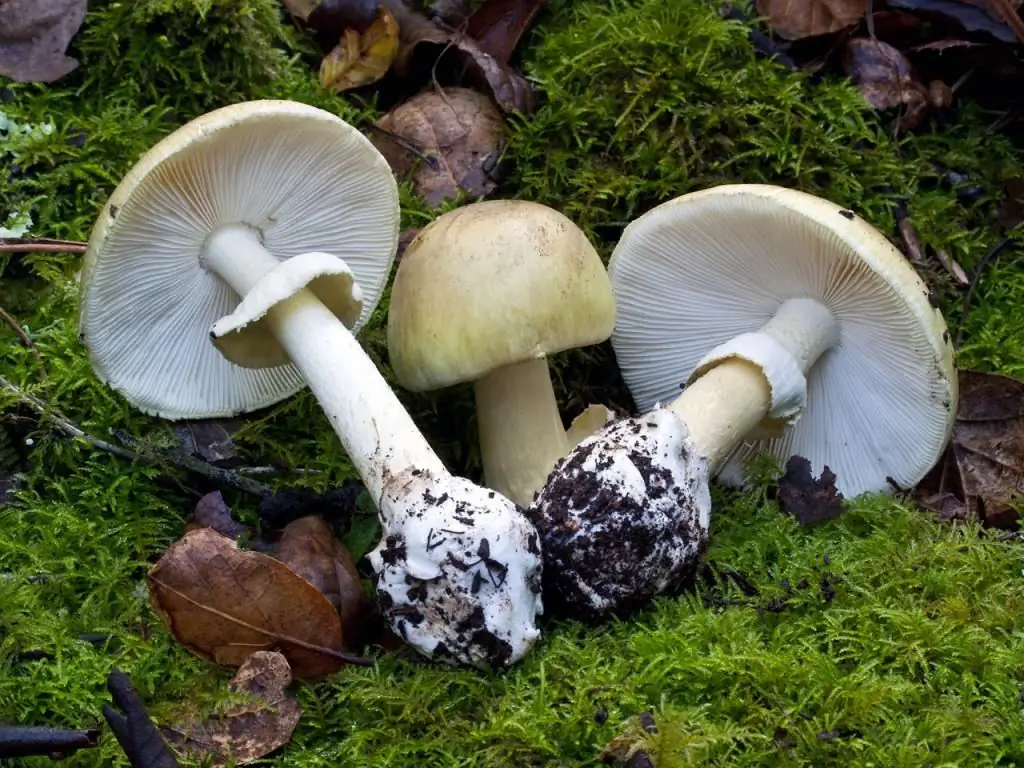- Author Henry Conors [email protected].
- Public 2024-02-12 02:42.
- Last modified 2025-01-23 09:07.
There are many interesting things in the plant world. Some of its representatives catch and eat insects. Others climbed on their own kind in order to survive. This is how an epiphyte does - a plant that had to fight for life in difficult conditions. Thanks to this method of survival, epiphytes were able to get more air, light and protect themselves from animals. But at the same time, they do not harm their "home" if there are not too many of them on it.

Where do epiphyte plants grow?
For a comfortable existence, they choose trunks or even leaves of trees. Epiphytic plants are abundant in tropical forests. The latter are dense thickets that do not allow sunlight to penetrate to the very soil. Therefore, plants that, for a number of reasons, were not able to grow a strong tree trunk, which could serve as a support for them and raise foliage higher, tried to survive in another way. They had to reach for the sunlight with the help of their brethren. Epiphytic plants climbed up the trunks and branches of trees. They did this not only in tropical forests, but also wherever living conditions were lacking, for example, in shady spruce forests or mountain crevices. If in the tropics an epiphyte is a herbaceous plant, then in rocks and coniferous forests it is mosses, ferns or lichens.

High-rise building
In the tropics, these flora can choose which layer to settle on. Some of them are shade-loving and do not rise high. They don't need a lot of sunlight. Others need it, so they climb higher. On the highest "floors" epiphytic plants grow only if they can withstand adverse conditions: low humidity, windiness, fluctuations in air temperature, nutrient deficiencies.
If it doesn't work any other way
How do they survive, not being able to get everything they need for growth and life from the soil? The fact is that an epiphyte is a plant that actively uses everything that the environment gives it: it collects rainwater, dew, organic matter from the surface of the supporting plant and the waste products of birds and animals. Epiphytes do this in different ways, depending on which they have a different structure. Some of them collect moisture and can accumulate it up to 5 liters, due to the fact that they are shaped like a rosette. Others have pocket-shaped or funnel-shaped leaves, which also accumulate moisture. Still others try to retain water by forming a “nest” around them from the fallen leaves of other plants and various waste products of the living world.

Reproduction of epiphytes
We know several ways of reproduction of representatives of the flora. But not all of them are suitable for epiphytic plants. They chose the most popular and easiest way - propagation by seeds, which fly from tree to tree with the help of wind. In some species they are small and light, in others they have special adaptations to facilitate air travel. Sometimes the seeds of epiphytes are carried by animals or plants. It happens that these plants accidentally find themselves in a new place for them. This happens when they are carried by animals or birds. Tillandsia has an interesting way of moving. This plant attaches itself to a tree by sending down its long, light shoots, which are easily torn off by the wind and end up on another tree.

Gotta hold on
In order to quickly gain a foothold and start growing on a new support, epiphytes have the ability to quickly grow roots. Even the smallest ones cling to a trunk or a branch, sometimes encircling them, as if tying the plant so that it cannot budge. It is interesting that the roots of epiphytes play the role of holders, and in many of them they have lost the ability to absorb nutrients, but they provide plant respiration. An additional function of epiphyte roots is protective. They often grow sharp spikes, preventing them from being plucked or eaten by their owner. However, there are certain types of insects for which this is not a hindrance, and they destroy leaves and roots (for example, tropicalants).

Epiphytes: examples of plants
Let's get acquainted with Phalaenopsis orchids. The translation of her name - "like a butterfly" speaks about her appearance. This beautiful flower grows in Australia, New Guinea, South and Southeast Asia, as well as on the islands of the Malay Archipelago. Its homeland is forests with high humidity and air temperature. For life, he chooses the uppermost branches of trees, for which he clings to the roots. Its large fleshy leaves contribute to the accumulation of water. And at night it stores carbon dioxide.
Platicerium is another name for "antler". This fern grows on trees in the tropics. In nature, it reaches gigantic proportions. There are several varieties of this plant, but they all look like leaves that resemble the flat antlers of a deer or elk. But at the same time, other leaves grow on the platicerium. They have a concave shape and serve to collect organic matter. The horn-shaped leaves are covered with a silvery down, which also captures nutrients from the air and helps the fern to function.
Interestingly, an epiphyte is a plant that can be grown at home. People fell in love with them for their decorativeness and unpretentiousness. For example, the platicerium is placed in the shade, the temperature is observed, periodically sprayed, and it pleases its owners with an unusual view.
What epiphyte plants grow in our home
Another tropical inhabitant who settled in our apartments is Veresia. It has brightly colored leaves. Forits content needs diffused light. It is interesting that they water the veresia by pouring water into the outlet, which experienced plant growers recommend blotting with a napkin from time to time to fill it with fresh moisture. It is interesting that although veresia is an epiphyte, at room conditions it is planted in the ground.
Soil and leaves are recommended to be sprayed to maintain moisture. Just like other similar plants, veresia is fed by spraying the leaves, since its roots are weak and not able to fully absorb nutrients.

To see the Veresia flower, it must be kept in a warm place. And if this does not help, then one unusual way will help speed up flowering. It is necessary to put a ripe fruit near the pot, preferably a banana. It will release ethylene gas to promote flowering.
Not like everyone else
Another domestic resident who is settled in the soil is the ripsalis cactus. It doesn't look like what we can imagine. It does not have a round or oval shape and is not covered with spines. Rhipsalis is a bunch of thin long stems descending down. They are covered with hairs and have a diameter of only 1-3 mm. This cactus blooms in winter. All shoots at this time are covered with small white or pinkish funnel-shaped flowers. Ripsalis care is not difficult. The main thing is to choose a suitable place so that it is not hot and not dry. In general, the limitation for growing epiphytes at home is the impossibility of creating suitable conditions. In order for it to be successful, a person continues to research and studytheir lives in nature.
The world of epiphytic plants is large and diverse. It is impossible to cover all of them in one article. They not only set an example of survival in difficult conditions, teach not to give up and fight for life to the end, but also decorate the Earth. It is not for nothing that representatives of the class of epiphytes - orchids - have penetrated to us from distant tropical countries and have become one of the most beloved flowers.






